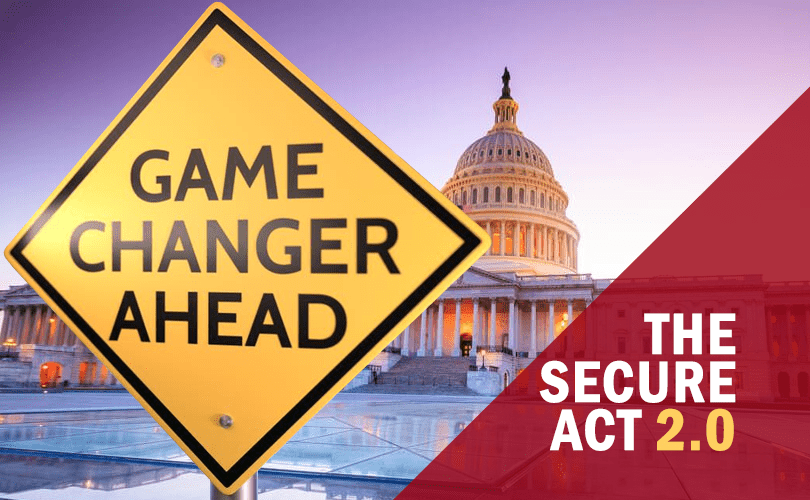
21 Dec Secure Act 2.0
SECURE ACT 2.0
The Secure Act, also known as the Setting Every Community Up for Retirement Enhancement Act, builds on the prior Secure Act that was signed into law on December 20, 2019. That act aimed to improve retirement security for American workers by making it easier for them to save for retirement, as well as increasing access to retirement savings plans and providing more flexibility in how those savings can be used.
According to the recently released text of the $1.7 trillion 2023 Government Funding Legislation, the end-of-year spending bill that lawmakers will vote on in the coming days to avoid a government shutdown is set to include modifications to the Secure Act, which has been dubbed the Secure Act 2.0.
If passed, this could benefit Americans across the spectrum regardless of how close they are to retirement, though many provisions wouldn’t take immediate effect. A few of the main provisions in this proposed Act are described below.
Automatic enrollment
Starting in 2025, most businesses would be required to automatically enroll employees in 401(k) plans. Employers would contribute 3 to 10 percent of their wages. Each year, the contribution would increase by 1 percent until it reaches at least 10 percent, though not more than 15 percent. Businesses with 10 or fewer employees and businesses that have been open for less than three years would be exempt, along with church and government plans.
Saver’s match
For workers earning less than $71,000 per year, the federal government would provide a 50 percent match up to $2,000 in employee cash contributions, meaning the government would provide a maximum of $1,000. That cash would be deposited directly into the retirement accounts. Under current law, the matching program is a tax credit — but that doesn’t help lower-earning workers who don’t owe taxes.
Emergency expense withdrawals
Early withdrawals from a 401(k) typically come with a 10 percent tax. Under the new proposal, a person would be able to make one penalty-free withdrawal for unexpected or immediate expenses arising from family or personal needs. One withdrawal of up to $1,000 would be allowed per year if the amount was repaid. If it was not, another withdrawal could not be made for three years.
Emergency savings
Nearly half of Americans would struggle to cover an unexpected $400 expense, and nearly 60 percent of people with retirement accounts and no emergency savings have tapped into those long-term savings, according to the Senate Finance Committee. A study cited by the committee showed that at least a month of emergency savings could make a difference.
The proposed changes would give employers the option of offering their lower-paid employees a savings account linked to their long-term retirement plans. Employers could also automatically opt employees into the savings accounts, contributing no more than 3 percent of the employee’s salary. The account would be capped at $2,500, and additional money would be routed into the retirement account.
Part-time worker enrollment
Current law says that part-time employees can have a 401(k) plan if they work with their employer for one year with 1,000 hours of service, or three consecutive years with at least 500 hours of service annually. The new law would reduce that three-year period to two years for eligibility.
Mandatory distributions
Under current law, people with 401(k) plans must take out money from their accounts starting at 72, to ensure people use the money rather than pass it down through their estates. The new proposal would increase that mandatory age to 73 starting in 2023 and then 75 starting in 2033.
Student loan matching
People strapped with student debt may not be able to afford to put money in retirement accounts, causing them to miss out on employers’ matching contributions. Under the proposed law, employers could choose to make contributions to retirement accounts based on an employee’s student loan payments.
Overall, the Secure Act 2.0 is a significant step towards improving retirement security for American workers. By expanding access to retirement plans and providing more flexibility in how those savings can be used, the Secure Act 2.0 aims to help Americans prepare for their golden years.
If you have any questions on the Secure Act and how it could affect you, please don’t hesitate to contact us.

